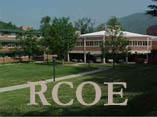Artifact # 9
An Accessible Computer Lab: This is a list of physical settings that would help support student involvement and collaboration in a computer lab.
Context
I designed this "ideal computer lab" in my
Microcomputers in Education class in Spring of 2001 as part of my Technology
Portfolio.
Impact
I have a resource for future use if I am ever
on a committee concerning the layout of a computer lab in my school.
Alignment
By providing so many adaptations to the environment
of the computer lab, students with various capabilities would be able to
use the lab. In creating this list, I wanted to serve as many students
as possible, regardless of their abilities or backgrounds. Because
I may have students with disabilities in my classroom, they would be able
to easily move around this "idea" lab (Technology Standard VI B).
Many of the features that I included in this ideal computer lab promote
a safe and healthy example of technology for children (Technology Standard
VI D). Generally, I found that students learn better when they are
in surroundings that are comfortable for them. I designed this ideal
computer lab to maximize the students' learning while they were present
in th lab, with such items as comfortable chairs and proper air conditioning
and heating (Technology Standard II B).
